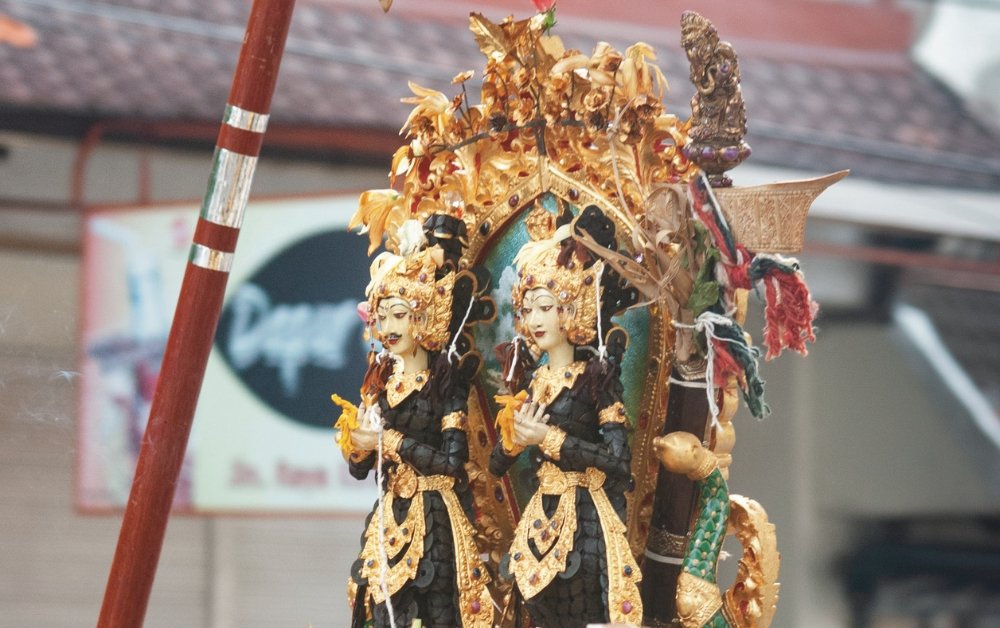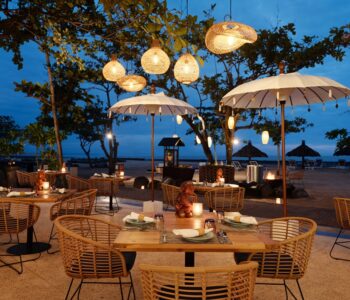
Every year, the island of Bali comes alive with a profound and deeply spiritual tradition known as melasti. It is a ritual of purification, during which worshippers travel to the beach in procession. Carried upon their heads are special objects, often wrapped in sacred textiles. These are the pratima and pralingga, effigies symbolising gods and deities.
In Balinese Hindu religious teachings, Ida Sang Hyang Widi Wasa (Almighty God), does not have a physical or visual form. As such, God, in His various manifestations, is symbolically materialised into something more visible and indeed tangible. Such depictions may be in sacred drawings or carvings, or in the case of the pratima and pralingga, into sacred statues.
Kept in the village and public temples, secured in intricately carved box shrines known as gedong kunci, these special effigies are mediums for deities, who are said to ‘reside’ in them during ceremonies. These statues are carved from wood or stone, or perhaps even fashioned out of the pis bolong hollowed coins into special figures. What sets these two apart is that the pratima (also called murti) takes a more human form, such as a holy or royal figure; whilst the pralingga will take the form of an animal, including mythical ones like dragons (naga) or the God-bird Garuda. These ‘vessels’, as they might be considered, do not visually represent the deity they are made to hold or symbolise.
What exactly distinguishes a ‘wooden statue’ from a worshipped pratima? Well, it is not uncommon for an ‘object’ to be sacred in Bali: masks, puppets, costumes, keris daggers are among the revered items in the Balinese religious repository. These items must be ritually sanctified, elevating them from profane to sacred. It takes seven ceremonies to make a pratima and pralingga a ‘holy’ object: nuasen, pemakuh, pengurip-urip, mlaspas, masupati, abhiseka or ngadegang, and melasti. These ceremonies take place throughout the life cycle of the statues, from the very gathering of raw materials, to the production process, to being ‘imbued’ or made to ‘come alive’ with spirit, to its final purification ceremony.
Unlike masks and costumes, which are considered ‘vehicles’, whereby deities are said to control its wearer, the effigies are more objects to which worship can be directed. They are taken out mainly for larger ceremonies, like the odalan temple anniversary, rather than daily offerings. Pratima and pralingga are also said to be symbols that can be used to strengthen faith (Sraddha) and devotion (Bhakti) to the Almighty God.
Throughout the year, even sacred objects are subject to impurity, and as such must be cleansed in the sea during the annual melasti ceremony.









